|
1960 - Consolidation
As noted in 1959, 1960 was another year when a number of important changes took place at the aerodrome. The first of these was on 8 March when planning permission was sought for a new fuel installation. This was for a tank and pump on the north side of the aerodrome, near the hangars, in order to relieve the congestion on the south side. The application was approved and work to install it began without delay.
|
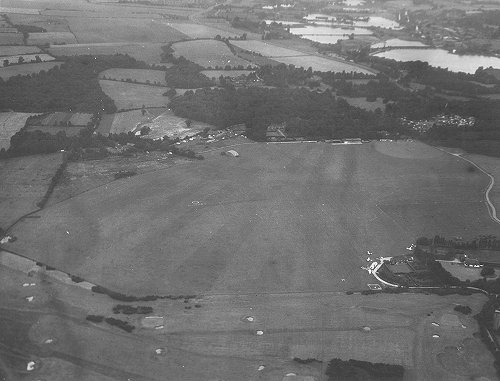
The aircraft based on the north side of the aerodrome benefited from a new fuel installation next to the hangars. Note the flying club is still in its hut on the south side and the extended flying area made possible by the purchase of part of Abrahams field is visible in this image taken in 1960.
|
After the war when the buildings were returned to the aerodrome from Mr Hewlett's neighbouring land, some of them were only given temporary planning permission, possibly because a number of influential local people hoped that the aerodrome would gradually revert to agriculture or become housing. Permission to retain these buildings was about to lapse so a new application for each building had to be made. These were granted but again only for ten years. Unlike many wartime aerodromes, Denham gained no hangars or other buildings except a small Blister hangar. With more sophisticated aircraft wanting to use the aerodrome more hangarage was needed to protect their electronic equipment from the damp and to provide space for maintenance to be carried out. A planning application was submitted for a new hangar but this was refused on 13 November.
|
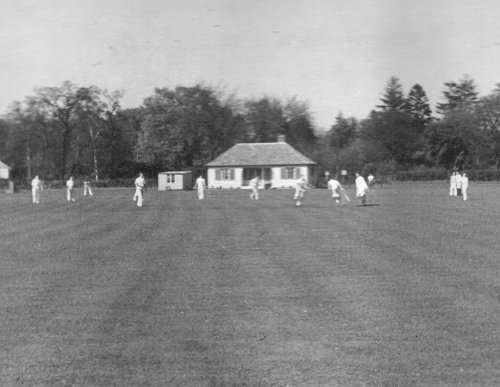
The bungalow in the north east corner of the aerodrome became permanent in 1960. Wimpey's were still playing cricket in the corner as can be seen here.
|
During the year a wide variety of people visited the aerodrome, among them Dr Barbara Moore. Dr Moore was an engineer by training, but had become famous through her theories regarding diet and exercise. These therories were ably demonstrated by her undertaking long treks across Europe, and by becoming the first woman to walk from San Francisco to New York, a distance of over 3,000 miles, in 1959. She visited Denham in 1960 aboard a Miles Messenger air taxi.
|
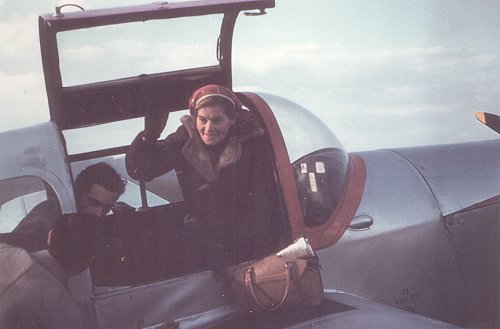
Dr Barbara Moore, the celebrated long distance walker, visited Denham in a Miles Messenger.
|
Another change at the aerodrome during the 1960s was a subtle one, it regarded the nature of the aircraft both based at and visiting Denham. Open cockpit biplanes and monoplanes of the prewar era were giving way to new designs. Tail wheels were being replaced by nose wheels, and wood by metal. British light aircraft manufacturers were finding it hard to compete with mass produced aeroplanes from the USA, steadily Beechcraft, Cessna and Piper models were flying into Denham.
|
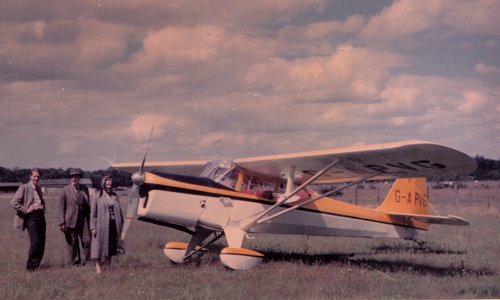
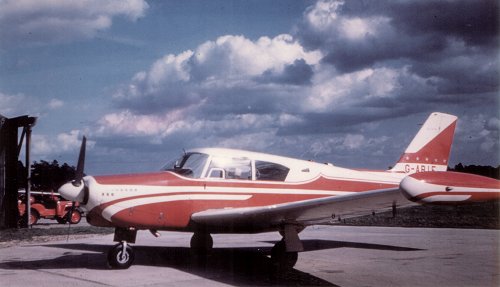
The sunset of the British light aircraft industry saw British tailwheel types steadily replaced by American nosewheel aircraft throughout the 1960s. Interestingly, this fabric covered Auster J5L Aiglet Trainer and all metal Piper PA-23 Comanche were built only a year apart, 1959 and 1960 respectively.
|
The airfield was continually evolving, and this was to continue into the new decade, as will be related next.
|
|

